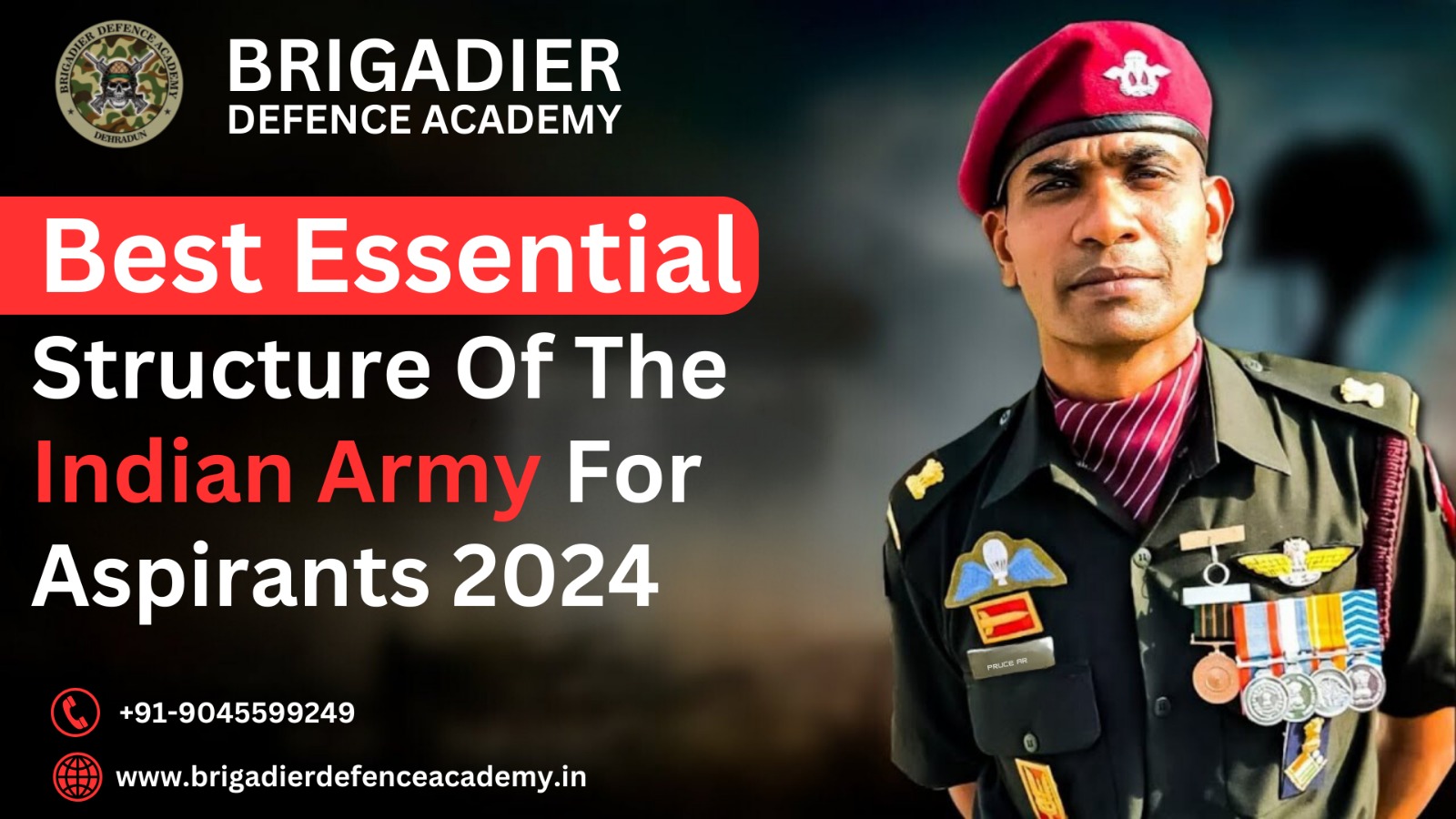Introduction:
The Indian Army is the land-based branch and the largest component of the Indian Armed Forces. It plays a crucial role in safeguarding the nation’s sovereignty, territorial integrity, and maintaining peace and security within its borders. For individuals aspiring to join the Indian Army, understanding its structure, organization, and functioning is essential. This article provides an overview of the essential structure of the Indian Army for aspirants in 2024.
Overview of the Indian Army:
The Indian Army traces its roots back to the British Indian Army, which was established during the British Raj.
It became the national army of independent India after the country gained independence in 1947.
The primary mission of the Indian Army is to ensure national security and defend the country against external aggression.
In addition to its primary role, the Indian Army also plays a vital role in disaster relief, peacekeeping operations, and internal security.
Organizational Structure:
The Indian Army is organized into various commands, each responsible for a specific geographic region or operational area.
The operational commands include Northern Command, Western Command, Eastern Command, Southern Command, and Central Command.
Apart from operational commands, there are specialized commands such as the Army Training Command, Army War College, and Army Ordnance Corps.
The Army Headquarters, located in New Delhi, oversees the overall functioning and administration of the Indian Army.
Rank Structure:
The Indian Army has a hierarchical rank structure that defines the authority and responsibilities of its personnel.
The ranks can be broadly categorized into commissioned officers, junior commissioned officers (JCOs), and other ranks.
Commissioned officers include ranks such as Lieutenant, Captain, Major, Lieutenant Colonel, Colonel, Brigadier, Major General, Lieutenant General, and General.
JCOs hold ranks like Subedar Major, Subedar, and Naib Subedar.
Other ranks include soldiers, sepoys, and non-commissioned officers (NCOs) with designations like Lance Naik and Havildar.
Arms and Services:
The Indian Army is organized into various arms and services, each specializing in specific functions and roles.
Arms include Infantry, Artillery, Armoured Corps, Engineers, Signals, and Aviation.
Services encompass branches like the Army Medical Corps, Army Service Corps, Ordnance Corps, Electrical and Mechanical Engineers, and Army Education Corps.
Each arm and service plays a crucial role in ensuring the operational readiness and effectiveness of the Indian Army.
Training and Education:
The Indian Army places a strong emphasis on training and education to prepare its personnel for the diverse challenges they may face.
Training establishments such as the Indian Military Academy (IMA), Officers Training Academy (OTA), and National Defence Academy (NDA) groom future officers.
Specialized training centers cater to the needs of personnel in specific arms, services, and operational roles.
Continuous professional development is encouraged through various courses, seminars, and workshops conducted by the Army Training Command and other institutions.
Equipment and Technology:
They employs a wide range of equipment and technology to enhance its combat capabilities.
This includes tanks, artillery, infantry weapons, surveillance systems, communication equipment, and aircraft.
The army continuously modernizes its inventory through indigenous development, acquisitions, and collaborations with domestic and international partners.
Emphasis is also placed on research and development to leverage cutting-edge technology for military applications.
Special Forces and Elite Units:
Specialized units such as the Para (Special Forces), MARCOS (Marine Commandos), and Garud Commando Force.
These elite forces undergo rigorous training and are deployed for counter-terrorism operations, hostage rescue, and special missions.
Special Forces units are trained in unconventional warfare, counter-insurgency, and direct action behind enemy lines.
They play a critical role in enhancing the army’s operational capabilities and conducting covert operations.
Role in National Security:
The Indian Army is tasked with defending the country’s borders and safeguarding its territorial integrity.
It plays a vital role in countering external threats from hostile neighbors and addressing cross-border terrorism.
Additionally, the army assists civil authorities during natural disasters, riots, and other emergencies to maintain law and order.
The Indian Army also contributes to international peacekeeping efforts under the auspices of the United Nations.
Conclusion:
It is formidable force tasked with ensuring national security and defending the country’s interests. For aspirants looking to join its ranks, understanding the essential structure, organization, and functioning of the army is crucial. By familiarizing themselves with the army’s ranks, arms, services, training, equipment, and role in national security, aspiring soldiers can better prepare themselves for a career in the Indian Army in 2024 and beyond.







